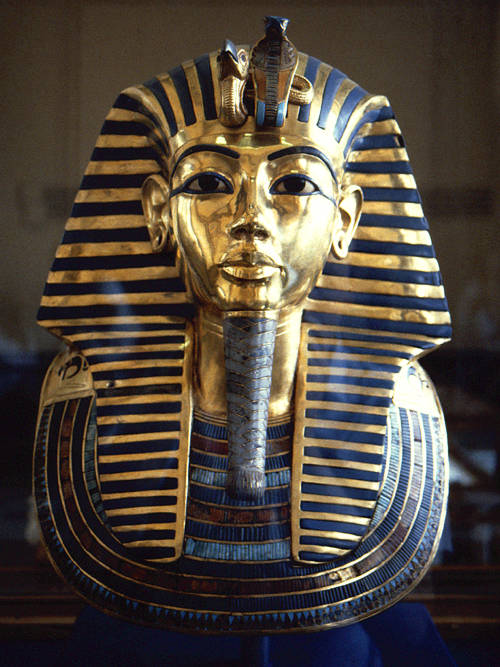| Revision as of 14:17, 3 February 2003 view sourceOliver Pereira (talk | contribs)Extended confirmed users5,895 edits parentage; external link← Previous edit | Revision as of 07:59, 14 February 2003 view source Mav (talk | contribs)Extended confirmed users77,874 editsm and opened the tomb the following month on February 13.Next edit → | ||
| Line 15: | Line 15: | ||
| Tutankhamun was briefly succeeded by the older of his two advisors, ], and then by the other, ], who obliterated most of the evidence of the rules of ], Tutankhamun, and ]. | Tutankhamun was briefly succeeded by the older of his two advisors, ], and then by the other, ], who obliterated most of the evidence of the rules of ], Tutankhamun, and ]. | ||
| ] discovered Tutankhamun's tomb in ], setting off a renewed interest in the modern world in all things Egyptian. On ], ] Howard discovered the sarcophagus of Tutankhamun. | ] discovered Tutankhamun's tomb in ], setting off a renewed interest in the modern world in all things Egyptian. On ], ] Howard discovered the sarcophagus of Tutankhamun and opened the tomb the following month on ]. | ||
| ==External link== | ==External link== | ||
| * by Dennis Forbes (KMT 8:3 . FALL . 1997 � KMT Communications) | * by Dennis Forbes (KMT 8:3 . FALL . 1997 � KMT Communications) | ||
Revision as of 07:59, 14 February 2003
Tutankhamun was Pharaoh of Egypt in the 14th century BC, from 1333 BC to 1323 BC, during the period known as the New Kingdom.

Tutankhamun (or King Tut) is perhaps best known to modern westerners as the only pharaoh to have his intact, unplundered tomb discovered. However, he is historically important as well.
Tutankamun's parentage is uncertain. An inscription calls him a king's son, but it is debated which king was meant. Most scholars consider that he was probably a son either of Amenhotep III (though probably not by his Great Royal Wife Tiye), or of Amenhotep III's son Amenhotep IV (also known as Akhenaton).
Tutankhamun was married to Ankhesenpaaten, a daughter of the great King Akhenaton, and he was responsible for reversing much of his father-in-law's Amarna revolution, in which Akhenaton attempted to supplant the existing priesthood and gods with a god of his own devising, Aten.
Tutankhamun, still a young boy and probably under the influence of two older advisors, restored the old pantheon of gods and their temples, granted the traditional privileges back to their priesthoods, and moved the capital back to Thebes.
Tutankhamun died at the age of 18 of unknown causes. On his mummy there is evidence of an injury to his head, which apparently had time to partially heal before his death.
Tutankhamun was briefly succeeded by the older of his two advisors, Ay, and then by the other, Horemheb, who obliterated most of the evidence of the rules of Akhenaton, Tutankhamun, and Ay.
Howard Carter discovered Tutankhamun's tomb in 1922, setting off a renewed interest in the modern world in all things Egyptian. On January 3, 1924 Howard discovered the sarcophagus of Tutankhamun and opened the tomb the following month on February 13.
External link
- End Paper: A New Take on Tut's Parents by Dennis Forbes (KMT 8:3 . FALL . 1997 � KMT Communications)